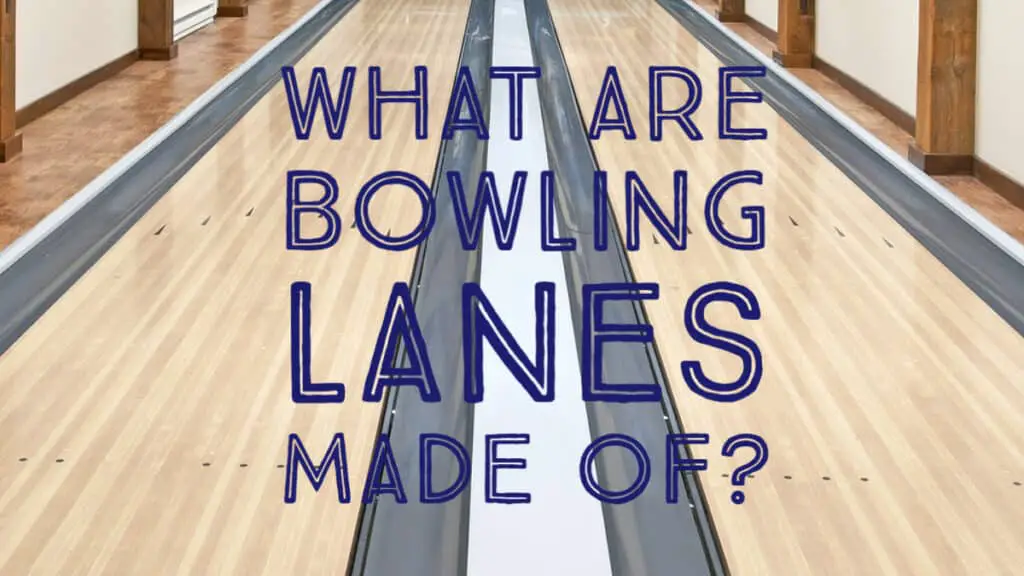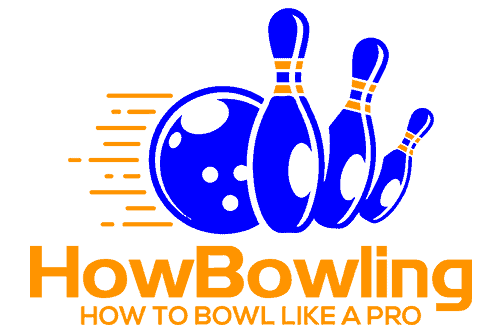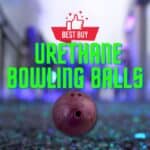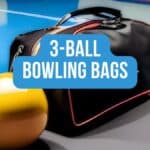Bowling is an incredibly fantastic sport, and everybody can take part in it irrespective of their age or skill level. But if you are thinking of becoming a professional, you need to learn a lot of elements, including the equipment and the place where this sport is played. So, the topic we are going to talk about today is Bowling Lanes.
You might be wondering, what are bowling lanes made of, and how do they work? Well, if that is what you are here for, you are in the right place. This is precisely what I am going to talk about.
This article will talk about bowling lanes, the dimensions, the types of bowling lanes, the thickness of bowling lanes, and everything in between. So, make sure you read this article till the end if you want to learn more about bowling lanes.

Bowling Lanes
Bowling lanes are long linear surfaces with a smooth texture that bowlers throw the bowling balls on to knock pins and take them all down to get the most score.
They are of the most significance when it comes to bowling requirements. Without a proper bowling lane, you cannot bowl. The smoothness and slipperiness of the surface of a bowling lane are what takes a heavy bowling ball up to the standing bowling pins.
Even for children, the same bowling lanes are used in terms of material and dimensions. The only difference observed is that there are sliding stands used for children who like bowling or adults that cannot bowl without support.
Bowling Lane Dimensions
Before we talk about the types of bowling lanes and materials used in the making, we need to learn about the structure of a bowling lane. Most importantly, bowling lane dimensions are something you should know about. A Bowling lane is divided into different sections. Overall the length of the bowling lane is 60 feet long, and in terms of width, it is around 42 inches on average.
Before the foul line, we have a 12-foot surface that stands on the edge of the bowling lane. On the first 3 feet of this surface, we have the two rows of approach dots where you will be standing to bowl.
At the end of this surface, we have the foul line, where you will throw the ball, and you need to make sure you do not overstep the foul line because that will result in a foul without any points being awarded to you for that shot.
The aiming arrows are 12 feet away from the foul line. And the bowling lane ends as it touches the base of the first bowling pin standing in the set. That is about all you need to learn about the bowling lane dimensions. Once you understand the bowling lane, you can throw the bowling ball much better and get more success.
Types of Bowling Lanes
This might sound unusual, but bowling lane types matter a lot. Similar bowling conditions and oil patterns can have a different result on the bowling ball if the lane is different.
In modern bowling, there are two types of bowling lanes. One is known as a wooden bowling lane, and the other is known as a synthetic bowling lane. Let us take a look at each of them.
Wooden Bowling Lane
The more professional and premium kind of bowling alleys use this kind of bowling lanes. Wooden bowling lanes are made of, you guessed it, wood. The type of wood is usually soft, either pine or maple wood. These bowling lanes are expensive to install and usually last a lesser time than other bowling lanes simply because of their softness and delicacy.
Wooden bowling lanes are very soft. This means that they show signs of wear and tear quickly. And once the lane is showing signs of damage, you are going to have to reinstall it.
When it comes to oil patterns, wooden lanes absorb oil much quicker than other lanes. This makes the ball move and hook early and show tiny movement at the break of the oil pattern.
The longer a wooden bowling lane is used, the quicker it will start absorbing the oil on it and the faster the bowling ball will hook initially. So, bowling on a wooden surface can be tricky at times.
Synthetic Bowling Lane
On the other hand, a Synthetic Bowling Lane is an artificial version of the original bowling lane, which is quite popularly used around the world in bowling alleys everywhere.
These kinds of bowling lanes are harder in comparison to wooden lanes. This means that they are more durable and can take a lot more bumps than wooden lanes. So, there are lesser signs of wear and tear on them. In terms of oil patterns, the absorption rate is low, and the overall hook movement is more drastic at the end of the pattern instead of being fast at the start.
Your bowling ball will get more skid in the front of the oil pattern, and at the break, it will move and spin. Again, this is something that makes synthetic bowling lanes easier to bowl on.
What material are Synthetic Lanes made of?
Different companies use different materials for the construction of a synthetic bowling lane frame. Typically, synthetic bowling lanes are made from synthetic materials combinations of resistant aluminum oxide and matrix of melamine resin which create that tough synthetic material layer that is used to provide the lane with a smooth yet firm texture.
Synthetic Bowling Lane or Wooden Bowling Lane: Which one is better?
Well, there has always been quite a debate over what material lane is better for bowlers. It honestly depends upon the kind of bowling ball you are using and the oil patterns. For example, if you are using a plastic bowling ball that provides skid motion and does not have hooking potential, the better bowling lane for this bowling ball would surely be wooden.
This is because the wooden lane would absorb the oil well, and the ball would be given a momentary hook naturally because of the oil absorption, helping it balance its motion towards the pins.
On the contrary, if you are using a bowling ball that provides better hooking potential and friction, like a particle bowling ball or a reactive resin bowling ball, a synthetic bowling lane would perform great because of the better skidding motion it provides early on.
However, from a neutral perspective, I believe that synthetic bowling lanes are better for beginners and newbies because of the low hooking potential they offer, and they are perfect for straight, linear, skidding motion.
The thickness of Bowling Lanes
A fundamental question that needs addressing is, what is the average thickness of a bowling lane? The average bowling lane is 2 inches thick when it comes to the height of the lane.
This measure is the same in all kinds of bowling lanes and does not depend upon the material or the type of bowling lanes that are being used. It is the same in every single one of them.
The thicker a bowling lane is, the better because it will be more durable that way. Unfortunately, now there are other variations of bowling lanes that are less thick, and when it comes to bowling greens, the thickness is incomparable.
Thicker bowling lanes get less damaged over a long period of time. But either way, bowling lanes need to be replaced after a long time because the wear and tear can cause the ball to move differently than usual.
What are Bowling Lanes Coated with?
Whether you are bowling on a wooden bowling lane or a bowling lane made of synthetic material, one thing is for sure: either will be coated with a material layer.
This material is oil. Oil patterns are used to cover the bowling lanes. There are two purposes of covering bowling lanes with oil patterns contrary to popular belief.
The first purpose for the oil pattern to be used is to protect the bowling lane surface. The layer allows for the bowling ball to not cause damage on the bowling lane. This is something most people do not know about.
And the second purpose is to create a challenge and provide smoothness to the bowling lane. This smoothness makes the simple throwing of the ball difficult by introducing hook and spin on the bowling lane.
Conclusion
Bowling lanes are the heart and soul of a game of bowling. The perfect bowling lane covered with a decent oil pattern allows you to swing the ball the right way and knock all the pins right away. I hope you learned a lot about bowling lanes in this guide and that you utilize this knowledge in your upcoming bowling games. This knowledge will surely help you understand the game of bowling much better. So have a great bowling experience and have great success to come.




